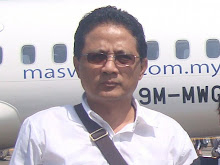
1. Something significant is pulsing through Asia. Not for centuries has that region been so fluid, so open, so cosmopolitan. Never has communication been so inexpensive and widely available, nor transport so rapid and efficient. Cross-border business-old and new, legal and illegal-flourishes. Newly laid roads connect megacities with spanking new suburbs and chockablock shanties. Integrated production networks span far-flung manufacturing hubs. Sleepy ports lined with tumbledown warehouse are waking up, and airlines offer a starburst of new routes. City and local governments are setting up new offices to handle record numbers of tourists and entrepreneurs. Environmental, health and human rights groups are forming information networks and patchy cross-border coalitions. Sensing new prey, transnational gangs have stepped up their activity.
2. Nowhere is this regional pulse more palpable than in what I call Maritime Asia, the vast sweep of coastline and water connecting central and southern India, Southeast Asia, China, the Korean Peninsula, Japan, Australia and New Zealand. In maritime communities, integration is spontaneous and tangible. A visitor to Asia’s major ports and coastal communities is likely to jostle against people from all over the region: A Malaysian official, an Indian engineer, a Chinese tourist, a Japanese banker, a Filipino bar hostess, a Korean professor, and an Indonesian businessman, perhabs. Most of them carry cellular telephones equipped with the latest devices and talk on them frequently-often in English, the region’s lingua franca. The visitor’s day might include a dim sum lunch, a stroll along a waterfront packed with cargo ships, shopping trip to a mall packed with Asian products, a sushi dinner and a Bollywood film. Westerners, no longer stared at, are lost in the crowd.
3. This quickening to life is highly uneven. In Asia’s remote rice paddies and dry plains, in the highlands and hill country, in the more distant islands of the archipelagos, in countless villages and small towns, lies a slow-moving, more isolated less cosmopolitan Asia. Foreign visitors are rare. Nevertheless, in local markets one might find “ Hello Kitty “ dolls, American T-shirts made in China and pirated CDs featuring a Korean pop singer.
4. Meanwhile, Asian government officials are promoting a different version of integration. Motivated primarily by reasons of state, members of ASEAN 10 are the drivers of this new movement. They have spun a series of concentric organizational circles dedicated to closer integration and what they call “ community building “. This activity is the chief expression of Asia’s new regionalism.
5. The innermost circle is ASEAN itself. Founded in 1967 ASEAN was originally designed as an anticommunist organization. Since then it has transformed itself into a cooperative grouping with numerous committees and working groups. ASEAN leaders have pledged themselves to an ASEAN Community resting on three pillars : economic, security and sociocultural. The next circle is ASEAN +3-ASEAN plus Japan, China and South Korea. This grouping periodically heralds the formation of an East Asian Community as a long-term goal.

No comments:
Post a Comment